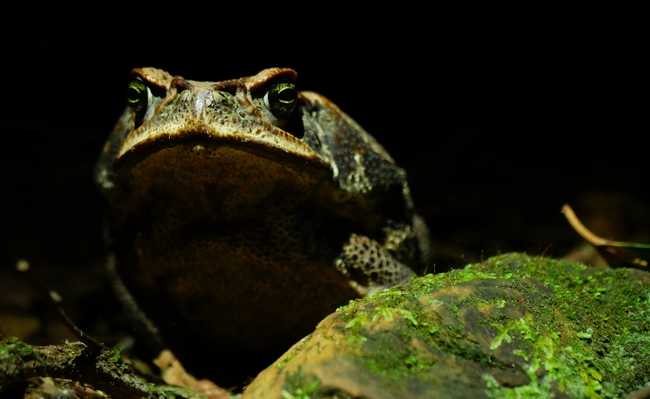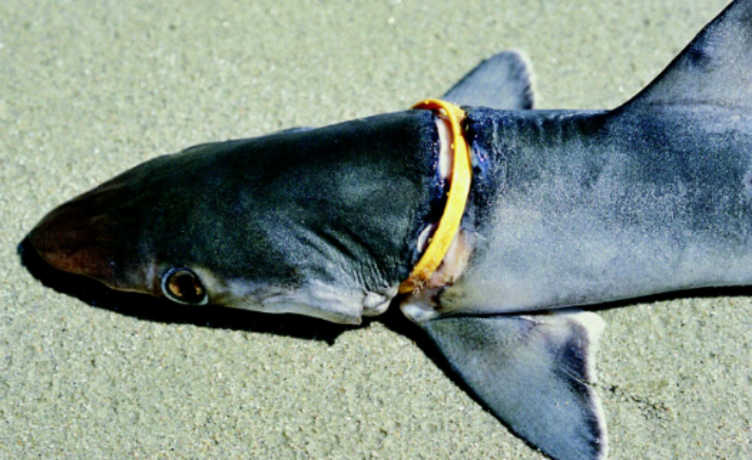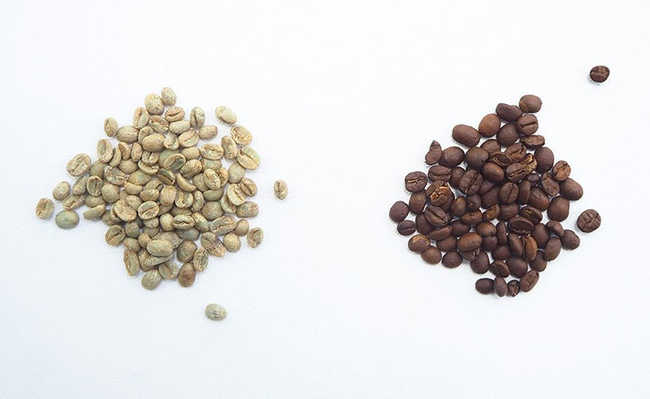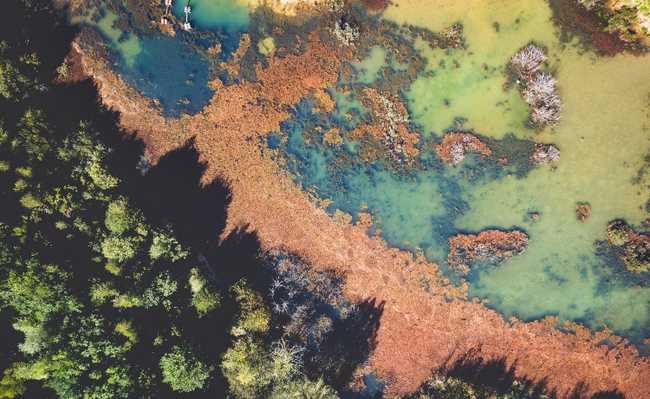Discover the main animals in the Amazon
The Amazon is home to the largest biodiversity reserve on the planet. Get to know the main animals of this biome

Cane toad (Rhinella marina) is one of the animals of the Amazon. Edited and resized image by Ulrike Langner, available on Unsplash
The Amazon is a region of 8 million km2 that extends over nine countries in South America and comprises a set of ecosystems that involve the hydrographic basin of the Amazon River and the Amazon Forest. The region is home to the greatest biodiversity on the planet, being the leader in the concentration of mammals, birds, reptiles and amphibians. Furthermore, among the animals of the Amazon there is also an unparalleled wealth of fish and an immense variety of insects and other invertebrates.
- Amazon Forest: what it is and its characteristics
The Amazon Forest is the largest equatorial forest in the world, occupying an area of approximately 6.7 million km2. It covers about 40% of the Brazilian territory, in addition to occupying portions of the territories of Venezuela, Colombia, Bolivia, Ecuador, Suriname, Guyana and French Guiana. In Brazil, it occupies practically the entire northern region, mainly the states of Amazonas, Amapá, Pará, Acre, Roraima and Rondônia, in addition to northern Mato Grosso and western Maranhão.
In addition, the Amazon region is also home to the largest hydrographic basin and the largest river in the world in terms of water volume: the Amazon River, with 6,937 km in length. In addition to Brazil, the Amazon basin comprises parts of Bolivia, Colombia, Ecuador, Guianas, Peru, Suriname and Venezuela.
The Amazon is responsible for providing essential ecosystem services for the quality of life of the human population, such as climate regulation, clean drinking water and clean air. Therefore, it is extremely important to conserve this world heritage, in addition to guaranteeing the protection of biodiversity and the provision of essential services for the quality of life and maintenance of the planet's climate in the long term.
- What are ecosystem services? Understand
Main animal groups in the Amazon
Invertebrate animals form the most numerous and diverse group of Amazonian fauna. However, due to their larger species, vertebrate animals are part of the best known group.
In the invertebrate group, stand out beetles, butterflies, spiders, ticks, centipedes, shrimp, armadillos, earthworms, slugs and snails, in addition to several species of worms. The vertebrate group is subdivided into amphibians, reptiles, birds, mammals and fish.
amphibians
Amphibians are vertebrate animals that have at least one stage of their life cycle developed in water. Its proliferation in the Amazon is favored by the typical characteristics of tropical forests, in which there is a junction of upland areas with rivers, streams and periodically flooded areas.
Currently, around 250 species of amphibians are known in the Amazon. Among them are salamanders and blind snakes. This group also includes species that do not have a tail and are characterized by jumping locomotion, such as toads, frogs and tree frogs.
Mammals
Mammals are vertebrate animals that are distinguished by the presence of hair and mammary glands. Thanks to fur, mammals are able to maintain their internal body temperature constant. Among the animals of the Amazon, about 420 species of mammals were counted. Furthermore, although there are aquatic mammals in this region, such as dolphins and porpoises, most of them are terrestrial. Among them are tapirs, monkeys and capybaras.
birds
Birds are vertebrate, bipedal and oviparous animals that have a beak and body covered with feathers. In the Amazon, about 1,000 species of birds have already been surveyed, which corresponds to approximately 11% of the total described species on the planet. However, this richness is underestimated, since the region is still little known.
Due to the intense search for plumage for sale, many Amazon species are threatened with extinction. For this reason, IBAMA (Brazilian Institute for the Environment and Natural Resources) represses the illegal trade in birds. The ararajuba and the purple-breasted parrot are examples of typical Amazon birds that are threatened with extinction.
reptiles
Reptiles are terrestrial vertebrate animals that do not have a constant body temperature and therefore need external heat to survive. Furthermore, reptiles differ from amphibians in that they do not depend on water for their reproduction.
Reptiles are found on every continent except Antarctica due to the low temperatures. Brazil has about 744 cataloged species: 36 turtles (turtles, tortoises or tortoises); 6 alligators; 248 lizards, 68 amphibians (legless lizards) and 386 snakes. The Amazon is home to a large part of this variety of species.
Fishes
Fish are aquatic vertebrate animals that, through their gills or gills, absorb the oxygen present in the water. They are also characterized by the fusiform body (shape-shaped), whose length can vary from 1 cm to 19 meters. In addition, fish have fins or fins, supported by bony rays or cartilage.
Currently, it is estimated that there are about 24,000 species of fish in the world, of which 3,000 are part of the group of animals in the Amazon. The most common fish in the region are the buttoned fish, acará and apapá. Due to predatory fishing, species such as manatees, piabanha, pirapitinga, piracanjuba, lambari, andirá and pacu are threatened with extinction.
Why is animal life so diverse in the Amazon?
The diverse fauna of the Amazon is directly related to the characteristics of the region's climate, relief and vegetation. The humidity in this area, coming from the cargo coming from the Atlantic Ocean, is associated with the large volume of rainfall. The relief, in turn, is cut by numerous rivers. In addition, the Amazon has a heterogeneous composition, with phytophysiognomies that can be classified according to the proximity to water courses in igapó forests, floodplain forests and upland forests. These environmental characteristics result in ecosystems that harbor habitats with adequate conditions for the various species that make up the group of animals in the Amazon.
Best known Amazon animals and curiosities
The best known animals in the Amazon are:
Mammals
- Jaguar: the largest feline in the Americas;
- Pink dolphin: an Amazon animal present in the region's legends, it is a major tourist attraction;
- Sloth: Amazon animal known for its slow movement, it sleeps up to 14 hours a day and comes down from the trees only once a week.
birds
- Yellow Macaw: a species with great importance for indigenous communities, it forms couples for life;
- Harpy Eagle: agile winged predator.
reptiles
- Sucuri: second largest snake in the world;
- Alligator-açu: exclusive species in South America, it is considered the largest alligator in the world.
amphibians
- Amazon tree frog: important animal from the Amazon for the extraction of the “vacina-do-sapo” by the Indians;
- Soft snake: largest amphibian without lungs.
Fishes
- Buttoned: omnivorous species that feeds on molluscs and freshwater shrimp;
- Aracá: species adapted to reservoir conditions.
Images of some animals from the Amazon
Gray Macaw

Image of Joel santana Joelfotos in Pixabay
Sloth

Michael Mosimann image in Pixabay
alligator

Stefan Steinbauer image in Unsplash
Jaguar

Ramon Vloon image in Unsplash
tree frog

Image by: Gerhard Gellinger on Pixabay
anaconda

Image from: Lingchor on Unsplash
Toucan

Domingo Trejo image in Pixabay










